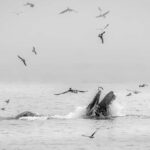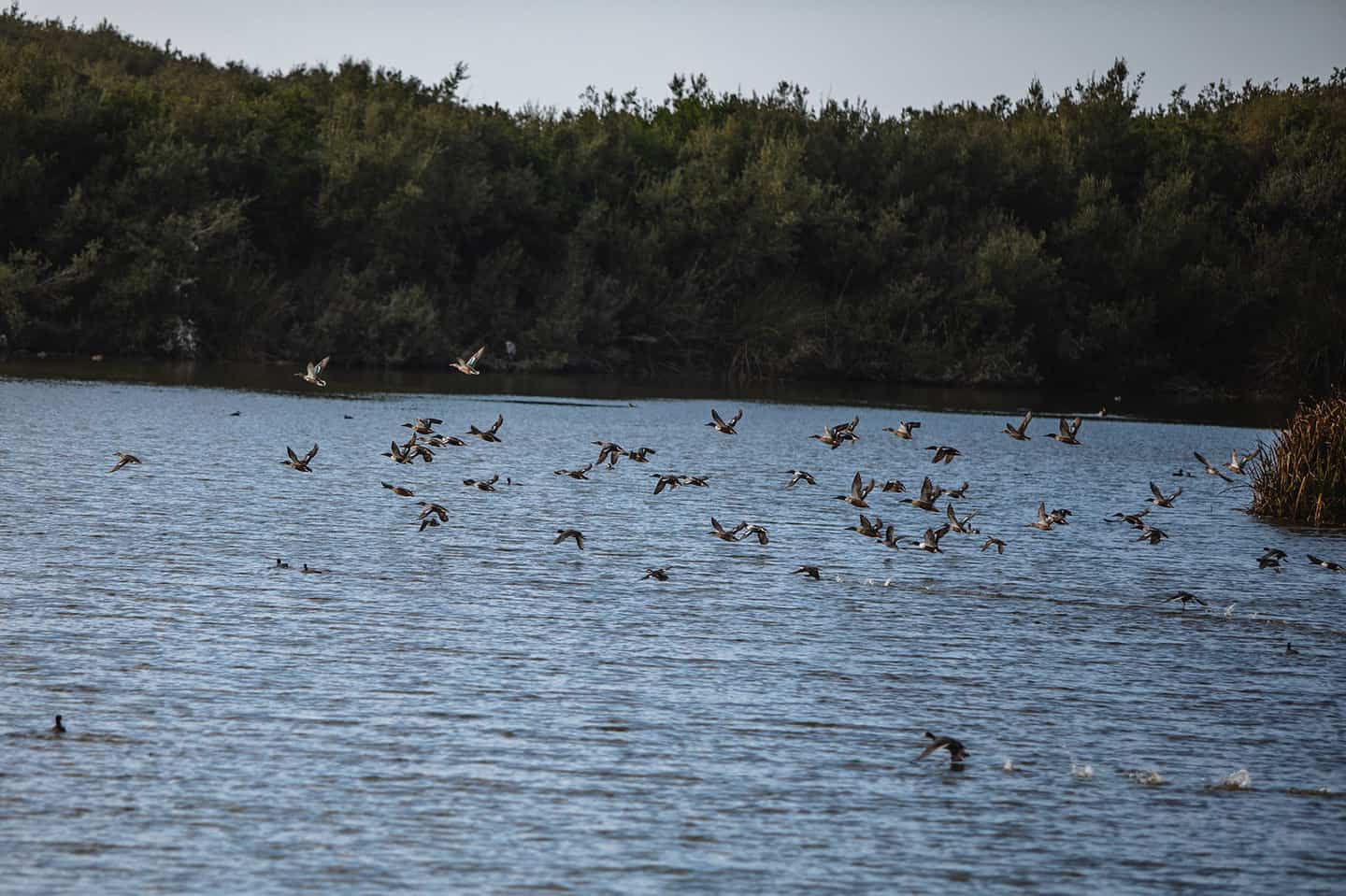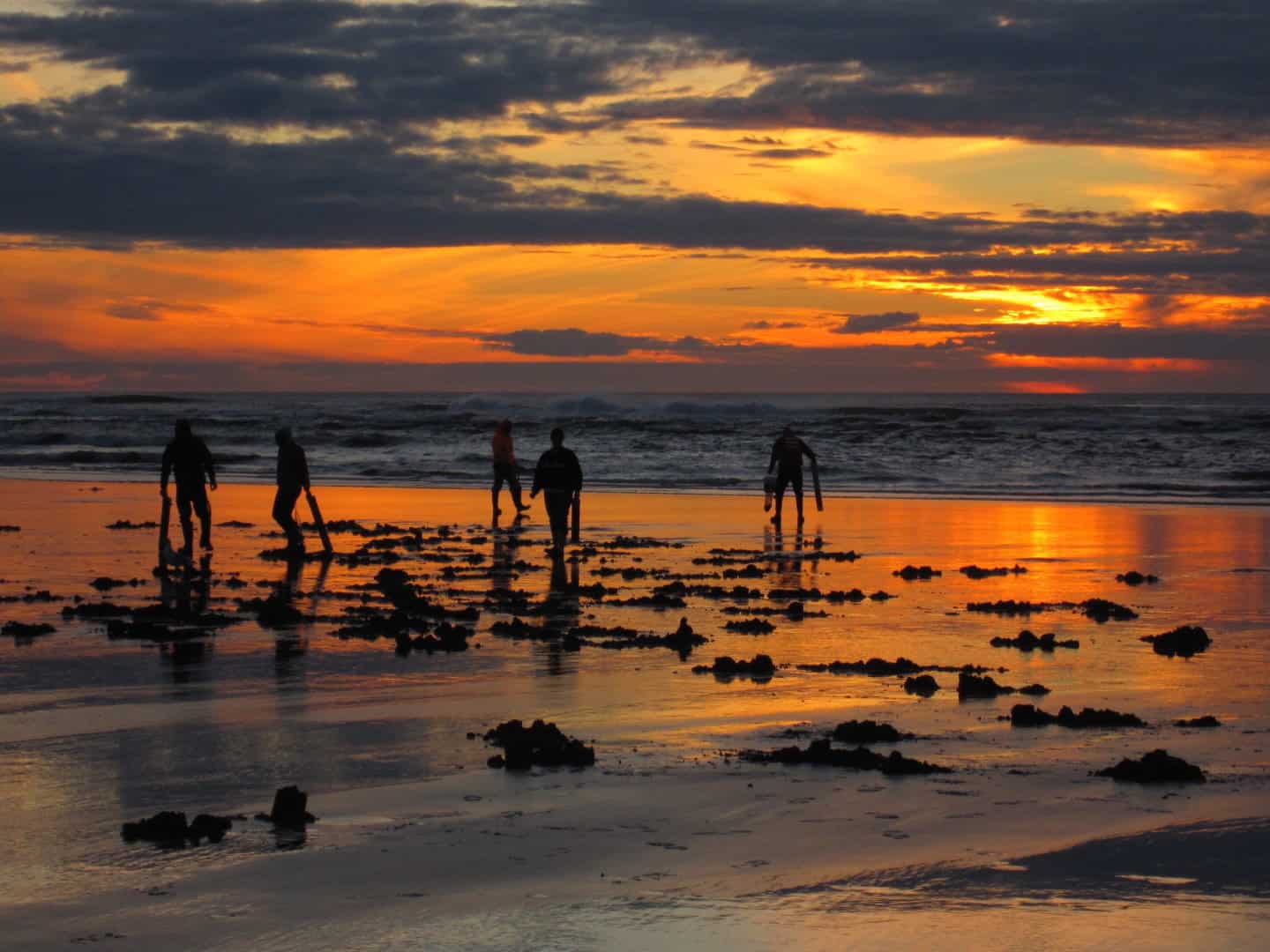The stretch of Highway 1 between Oceano and Nipomo is some of the most beautiful and biologically diverse coastline in the state. Here, 15 miles of dunes make up one of the largest coastal dune systems in California, with plenty of wildlife, flora and fauna to match. Watch for whales and otters from the Pismo Pier, and drop your line for surfperch. Or venture out on Pismo State Beach in Oceano for clamming and surf fishing. The Oceano Lagoon, Oceano Dunes and Oso Flaco Lake offer incredible bird watching opportunities, and Oso Flaco Lake even allows for freshwater fishing. If the great outdoors calls to you, Oceano and Nipomo sea life will fit the bill. And if you find yourself wanting to get more deeply rooted in this incredible place we call home, visit the Stewardship Travel for Good page. Here you’ll discover places and activities that allow you to join the story of the Central Coast. Check out the wildlife viewing tips, and find Oceano and Nipomo points of interest along the History and Heritage Trail.
Explore Sea Life Activities
| Tide | Time (PST/PDT) | Height |
|---|---|---|
| Low Tide | 2:25 AM | 1.63 ft |
| High Tide | 8:05 AM | 4.12 ft |
| Low Tide | 2:32 PM | 0.38 ft |
| High Tide | 9:00 PM | 4.38 ft |
Otter Spotting
Everyone loves the sweet, dog-like faces of the Southern Sea Otter, one of many marine mammal species that make their home along our section of Highway 1. Just beyond the surf, these playful creatures can be seen especially well from the height of the Pismo Pier. (This historic structure was recently updated and improved to become one of the most spacious piers on the Central Coast.) Just like people, sea otters enjoy dining on clams, abalone, and other shellfish available along the coast. Watch them care for their young, who lie on the adults’ bellies as they’re fed, groomed, and rocked to sleep. Those without pups will often put on a show of cracking shellfish open on their bellies with a rock, and chowing down! Southern Sea Otters live in and around the Central Coast year-round, so your chances of spotting one are fairly high. That being said, it never hurts to bring binoculars just in case the otters choose to float further offshore.

Whale Watching
Much to the delight of residents and visiting whale watchers, whale pods can be seen along the coast at different times throughout the year. (In fact, the Whale Trail organization, which identifies the best whale-watching spots on the West Coast, has named this area a top lookout point.) No need to hire a charter or take an Oceano whale-watching tour: migrating whales can usually be seen directly from the beach, pier or coastline. For starters, scan the horizon looking for groups of birds feeding on the krill that whales feed on; this can be a great way to glimpse a whale from shore. Or, to upgrade your whale-watching experience, rent a horse from the nearby Pacific Dunes Ranch and scan the shore by horseback. Nothing compares to the thrill of spying a spout offshore, and at certain times of year, you might see several all at the same time. Also keep an eye out for dolphins playing in the waves that break close to shore.

Bird Watching
Oceano is considered one of the best birding spots in the state thanks to the high volume of warblers and other passerines that migrate and winter here. Between Oceano and Nipomo, a total of 200 species have been sighted here. The Oceano Lagoon, in particular, provides access to rare species like blackburnian warblers, ovenbird and Baltimore orioles. Also look for domestic ducks, geese, gulls, and mergansers in winter. The Oceano Dunes also serve as home for the Western Snowy Plover, the shorebird whose numbers are on the rise thanks to federal protection. Oso Flaco Lake is also considered a premier birding spot. Even on the fringes of the parking area, birdwatchers can spy warblers and passerines. Over the lake’s boardwalk, find waterfowl like American bitterns, soras and Virginia rails. At the shore, the sandy coastal scrub habitat welcomes California thrashers, blue-gray gnatcatchers, scoters and loons. Don’t miss the opportunity to see the remarkable variety of resident and migratory birds in this area.

Fishing and the Pismo Clam
Look for surf fishing, pier fishing, kayak fishing, and freshwater fishing — all in Oceano alone. Drop your line from the comfort of the newly refurbished Pismo Pier, which boasts a series of cantilevered fishing platforms to minimize crowding. For excellent, uncrowded surf fishing, head down the beach to the Oceano Dunes, or even further to the Guadalupe-Nipomo Dunes (best accessed via the Oso Flaco Lake Preserve). In Oceano, this is especially easy as cards and trucks can drive directly on the sand, making hard-to-reach spots accessible. Set up your rod in PVC pipe (out of the way of oncoming cars) and catch big, beautiful surf perch from the waves. Just north of Oceano and Pismo Beach, Shell Beach and Avila Beach provide ideal conditions for kayak fishing on scenic, protected shoreline. And easy freshwater fishing can be had on Oso Flaco Lake, where largemouth bass, flathead grey mullet and white perch are commonly caught. And don’t forget clamming! This area’s clamming history goes back to the Chumash Native Americans, thousands of years ago. Though the population had been dwindling in recent years, the clams have recently returned, to the delight of locals and visitors alike. Just be prepared: you’ll need a license to take any home.


